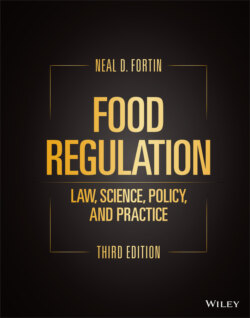Читать книгу Food Regulation - Neal D. Fortin - Страница 28
1.4.2 Rulemaking
ОглавлениеRulemaking involves the development of administrative rules or regulations for future enforcement. Generally, regulations specify the technical details that are necessary to comply with a law’s much broader requirements. For example, the FD&C Act, section 403, states in part, “A food shall be deemed to be misbranded (a) If (1) its labeling is false or misleading in any particular … .” Regulations are promulgated by the FDA to define specific information required on a label to avoid being false or misleading in any particular.
The APA specifies minimum procedural safeguards that agencies must follow when engaged in rulemaking. Notice of any proposed rule must be published by the proposing agency in the Federal Register. The agency must allow interested parties time to submit comments. In some instances, public hearings must be conducted with an official record and formal rules. Public comments must be reviewed and considered by the agency before final adoption of a regulation. The agency must explain why it did or did not incorporate suggestions in the final regulation. Final regulations must be published at least thirty days before they are to take effect, so as to allow an opportunity both for legal challenge and for adjustments necessary for compliance with the regulation. Note, however, that unless Congress specifies otherwise, federal agencies have some discretion under these procedural rules.
